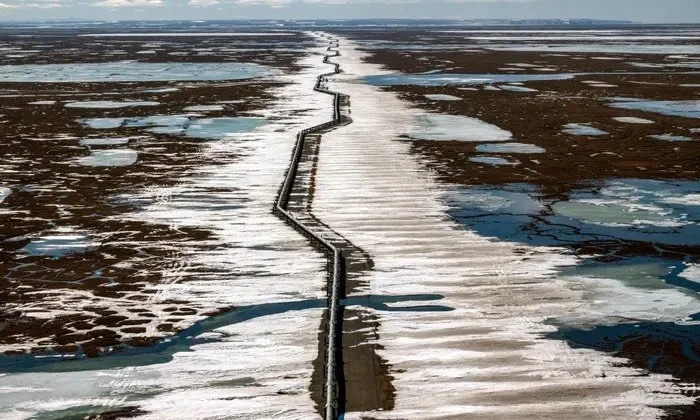The Willow Project: An Overview
Photo from The Guardian
April represents a month of encouraging environmental activism and protecting earth’s natural resources and habitats. In various ways April is viewed as “Earth Month” as it includes Earth Day on April 22nd— a day dedicated to celebrate our planet’s natural environment and advocate for its protection. In the presence of this month, it is important to discuss current issues or events that may be impacting the global environment, for example, the Willow Project.
What is the Willow Project ?
The Willow Project is one of the largest oil developments on federal land. It was started by a Houston-based energy company, known as ConocoPhillips. The Willow Project is ConocoPhillips’ decades long oil drilling venture on Alaska’s National Petroleum Reserve (on Alaska’s North Slope); this is less than 30 miles away from the Arctic Ocean. The Willow Project is currently the largest scale oil project under consideration within the United States. The project plans to hold up to 600 million barrels of oil within these lands, yet, this oil would take years to reach the market as the project still needs to be constructed. The Willow Project was originally approved to construct five drill pads; however, the Biden Administration was able to reduce to three. These three pads will allow ConocoPhillips to drill about 90% of the oil they are pursuing.
Additionally, the Bureau of Land Management estimates that the Willow Project could produce up to 576 million barrels of oil over a 30 year period. The Willow Project plans to create hundreds of miles of roads, airstrips, pipelines,a gravel mine, and a new processing facility in the middle of Arctic tundra and wetland.
Negative Effects
The Willow Project has given way to the rise of immense environmental concerns as the initial gravel mining and road construction—which has already begun—is estimated to have a total footprint of 499 acres. The burning of oil within Willow’s plan would add an estimated 239 million metric tons of carbon dioxide into the atmosphere within the project's 30 years of operation (around 9.2 million metric tons annually) — this is equivalent to driving an estimate of 1.7 million gasoline powered cars a year. The project also poses a harm to native species as it could destroy much of their habitat land and alter the migration patterns of native animals such as the caribou. The Willow Project was also opposed by Alaskan Natives such as the Native village of Nuiqsut, as the village would suffer greatly from the health and environment impacts from the project. The greater access to oil may also promote the country’s reliance on fossil fuels due to the lack of guarantee that further technology will be in place to reduce climate change.
Positive Effects
Lawmakers in support of the Willow Project claim that the project will create jobs, reduce the United States’ dependence on foreign oil, and increase domestic energy production. This allows for the United States to reduce their reliance on authoritarian regimes for energy recourses All three lawmakers in Alaska’s bipartisan congressional delegation urged the Biden administration to approve the project as the piece will produce billions of dollars of economic activities and tax revenue in Alaska. If the Willow Project were to have been rejected ConocoPhillips could have sued and potentially won billions of dollars (winning taxpayer dollars) and still have been able to proceed with the project regardless. This is due to the fact that a law governing the NPR-A and leases of ConocoPhillips held far before the current administration, gives companies with such leases the right to develop and legally challenge the government if they try to block the development.
Image from Forbes - Washington, DC - December 2nd: “Student and community members demand President Biden stop the Willow…”
Efforts Against the Willow Project
Earthjustice, a group focused on environmental law, will be filing a complaint against the Willow Project in order to attempt to halt the project’s progression. If various environmental groups are able to create an injection before winter (due to the fact that the project’s construction can only begin in winter due to the need for ice roads) , it could delay the Willow Project’s construction for an estimate of a year. Additionally a rise of internet activism against the Willow project has been displayed, especially among the youth, including a Change.org petition to stop the Willow Project that has amassed 2.8 million signatures. This advocacy displays the impact one common concern can have within society and populations which are most heavily affected by the potential harms generated by these concerns.
-
〰️
- 〰️
References:
The Washington Post: https://www.washingtonpost.com/climate-environment/2023/03/17/willow-project-alaska-oil-drilling-explained/
CNN: https://www.cnn.com/2023/03/14/politics/willow-project-oil-alaska-explained-climate/index.html

